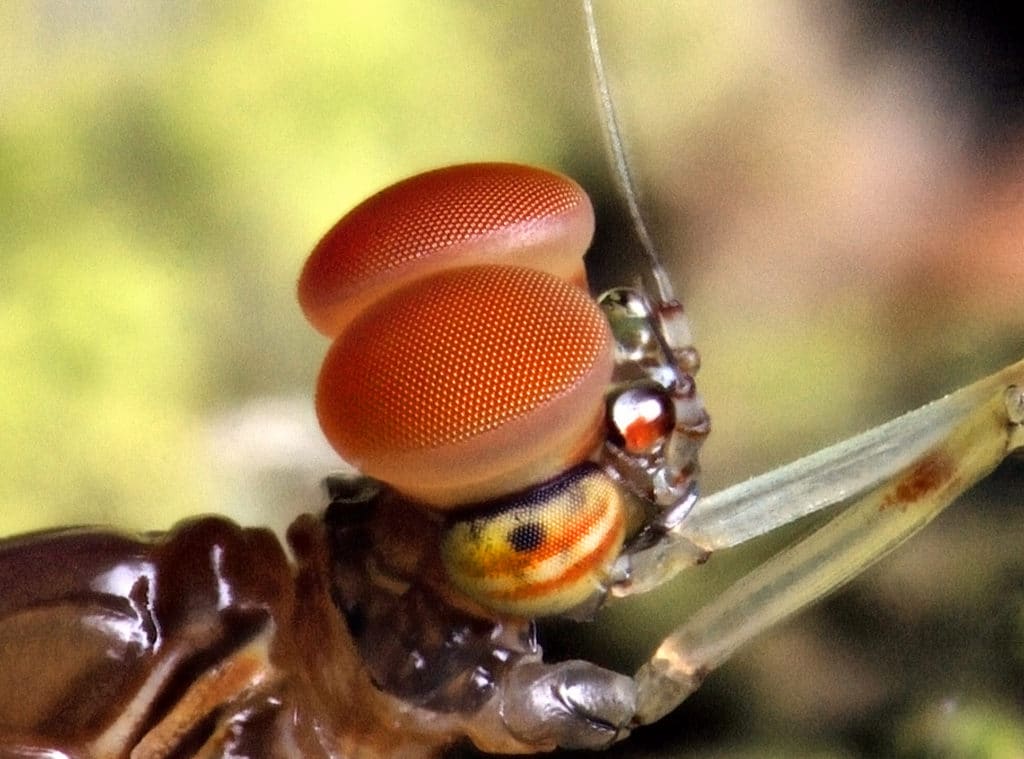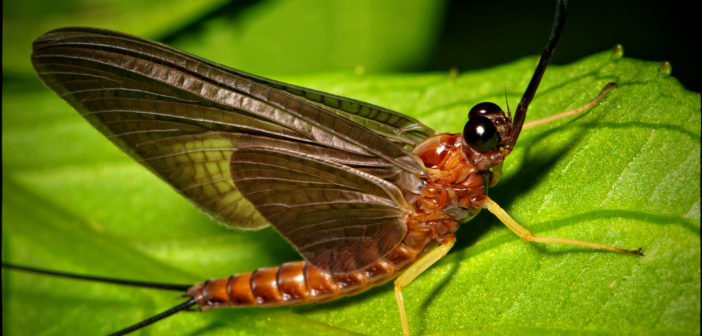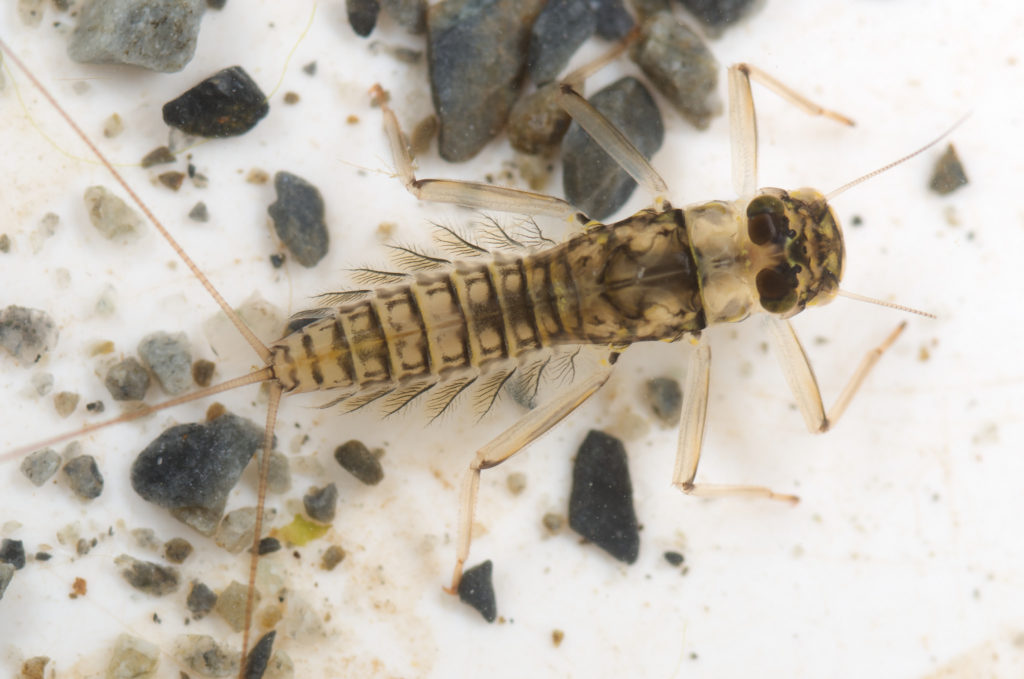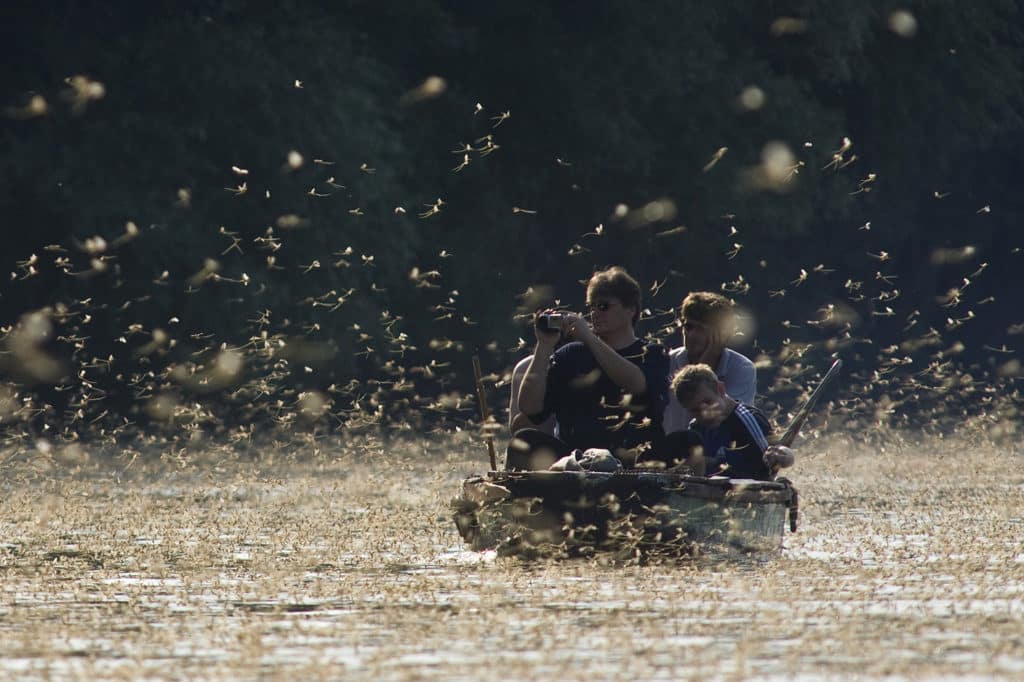Mayflies are among the oldest winged insects in existence, dating from the Carboniferous Period, 354 to 298 million years ago. That seems tragically ironic since adult mayflies live only a day or two! In fact, the name of their scientific order, Ephemeroptera, is from the Greek ephemera, for “lasting a day.” Mayflies spend almost all their lives in water, in an immature stage of development. When they finally become adults and leave it, it’s to mate, deposit their eggs and die.
Despite the “fly” in its name, a mayfly isn’t a fly. Along with dragonflies and damselflies, they belong to a scientific division called Palaeoptera. What particularly distinguishes them is that they cannot fold their wings flat atop their back and, instead, hold them vertically. All about dragonflies and damselflies
As naiads, they’re among the most valuable bottom-dwelling animals because they’re food for fish and other aquatic animals. But they’re important on land, too—as adults, they’re a food source for birds and other animals. Humans benefit, too, as they’re a species sensitive to pollution, and their presence and diversity are indicators of water health.
Mayflies are found around the world, except in the Arctic and Antarctic. There are about 630 species in North America and more than 2,000 species in the world. If you live near water, especially a stream, you probably see them in your yard.
Physical Characteristics
Adult mayflies are easy to recognize. Like other insects, they have six legs, but their forelegs are distinctively long (extremely so with males) and slender. The abdomen is long and thin, too, and usually held noticeably curved upward, while the wings are held together vertically. The wings are large, triangle-shaped, and transparent, with many veins and sometimes markings or mottling. Depending on the species, the hind wings are tiny and rounded, or sometimes absent. The body is soft and quite delicate. Some are nearly transparent, with others being yellowish, orange, green, or brown. Some have markings or dark bands on their body.
Adults range in size from 0.1 to 1.25 inches (2.5–32 mm) long, excluding the tails. The head is triangular, and the antennae usually are short and thin. The eyes are large and compound. In females, they’re separated, while males’ meet in the middle and split into a large upper lobe and a smaller lower lobe. Mayflies also have three tiny eyes called ocelli (oh-CELL-ee), which detect light.

Mayfly male’s eyes as seen from the right side of his body (Chris Fifield-Smith / Flickr; CC BY-NC 2.0)
Mayflies are often seen with their forelegs extended forward and sometimes also angled upward. Depending on the species, two or three threadlike “tails,” called caudal filaments, are at the tip of the abdomen. They’re fragile and easily broken off, so sometimes a two-tail mayfly is actually a three-tail that has met with an accident.
Naiads
Naiads have elongated bodies that are either flattened or cylindrical. They have a distinct head with compound eyes, chewing mouthparts, and antennae. They molt several times as their body grows. Wing pads can be seen on top of their thorax. Three pairs of legs extend from the thorax, and the abdomen is usually tipped with tails. They are usually a drab green or brown.
Naiads breathe through several gills along each side of their abdomen. The gills are highly variable and may be leaf-shaped, feathery, plate-like, or sometimes even forked. They swim by wiggling their bodies, and with some species, feathery tails help move them along. Some species live in silt and mud on the bottom, and others cling to rocks, plants, or logs. Most feed on microscopic plant matter, but a few species are predators. Mayflies do all their eating as naiads. As adults, they lack functioning mouthparts.
Mayflies are the only insects that have fully developed wings before reaching the adult, or imago (em-AH-go), stage. Finally, after many molts, the naiad becomes nearly ready for flight. In a pre-adult stage called a subimago, it swims to the surface and crawls out of the water. Breathing now through tiny openings in its exoskeleton, it finds a suitable spot and waits for its wings to dry. The wings are opaque and dull because there’s still one last layer to shed. The subimago can fly if it must, but weakly. Within a day, it will molt for the final time, revealing transparent wings that glisten in the sun. Soon after, the adult will lift itself into the air and begin its search for a mate.
Not always “May” flies
Although called “May” flies, one species or another can be seen throughout the summer and fall. Most prefer a habitat with flowing water, such as a stream or spillway, although some live in rivers, ponds, or still waters. Look for adults and subimagos on vegetation along the water’s edge. In the water, look for naiads in the places they feed.
If one finds its way into your house, handle it carefully. You can slowly coax it onto your finger or a piece of paper and set it down outdoors. Mayflies are harmless, they don’t bite, and they don’t have stingers.
Life cycle
Mayflies go through incomplete metamorphosis: They progress from an egg to a naiad to an adult.
Their courtship usually begins with vast swarms of adult males dancing in the air above water. Females fly into the swarm, where males grab them at the base of their forewings (the reason for the males’ extra-long forelegs). Each twosome leaves the party. They may mate in flight or alight on something (some do both—they start in mid-air but end up falling to the ground or water still coupled.) In some areas, parts of Lake Erie, for example, swarming includes so many individuals some years that they become a nuisance and a hazard by flying into people, making roads and sidewalks slippery, and splattering on windshields.
Females usually lay their eggs in low-light conditions, like at dusk or on an overcast day, on the surface of water either one by one, in small batches, or all at once. Some species lay their eggs directly into the water. A few species lay unfertilized eggs that hatch into more females, a process known as parthenogenesis. Eggs ultimately sink to the bottom and hatch there.
As with all other insects, a naiad’s “skin” is actually its skeleton (called an exoskeleton), worn on the outside of its body instead of within. As it eats and grows increasingly larger, the naiad must shed (molt) the inflexible exoskeleton each time it begins to outgrow it. Molting occurs twenty to thirty or more times over a period of three weeks up to three years, depending on the species, with one year being typical. Most species have one or two generations a year.
Predators
Fish are the main predators of mayfly naiads. Other aquatic life, such as dragonfly naiads, leeches, and crayfish, feed on them, too. Adults are prey for predatory insects, spiders, birds, and some mammals. Anglers use them for bait.
More reading:
In your yard: fireflies
Native plants for wildlife
About dragonflies and damselflies
Insects: an introduction
Earwigs








